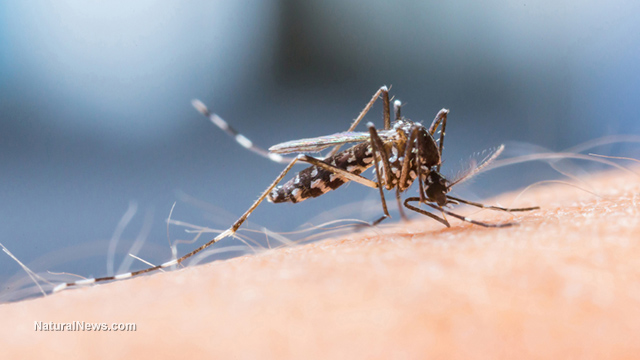 NaturalNews) The Puerto Rican government declared on July 17 that the
mosquito-transmitted disease chikungunya has reached epidemic
proportions. Puerto Rico is only the latest country to fall prey to the
disease, which has been sweeping the Caribbean since its arrival in late
2013.
NaturalNews) The Puerto Rican government declared on July 17 that the
mosquito-transmitted disease chikungunya has reached epidemic
proportions. Puerto Rico is only the latest country to fall prey to the
disease, which has been sweeping the Caribbean since its arrival in late
2013.According to the Pan American Health Organization, a total of 354,000 cases are suspected or confirmed across the Caribbean as a July 11.
"We're seeing an epidemic ripping through a naive population, with a very large number of cases in the Dominican Republic and elsewhere," said Peter Hotez of Baylor College of Medicine. "There is every reason to believe we could see similar epidemics along the US Gulf Coast maybe later this summer or starting next year."
Virus causes severe pain
Chikungunya, first identified in Africa in 1953, is characterized by symptoms similar to those of dengue fever, another mosquito-borne illness."As with dengue fever, there is a high fever," said emergency room doctor Dominic Martinello of Anna Jaques Hospital in Newburyport, Mass. "There will be a high fever of up to 104 degrees. There will be pretty significant joint pain and possibly a rash. There may be nausea and vomiting, but rarely would a patient die.
"The incubation period is about one to 12 days. The person may have the fever for one or two days. The joint pain, while it can be severe, can last for five to seven days and then the person should recover."
Chikungunya first arrived in Puerto Rico in late May, and more than 200 cases have been confirmed mostly in or around the capital.
Disease has already reached mainland U.S.
Cases of chikungunya have already been reported in the mainland United States as well. Just a week after the Puerto Rico announcement, Florida health officials announced two confirmed cases of people who had contracted the disease from local mosquitoes. This marks the first evidence of the disease becoming endemic to the mainland."There is definitely a lot of discussion about this and we are watching," said Beth Daly, chief of infectious disease surveillance at the New Hampshire Department of Health and Human Services. "There have actually been 497 cases of this virus in the U.S., but that includes the territories like Puerto Rico. We have seen 300 cases in 30 states, but with the exception of the two Florida cases, all have been in returning travelers."
It remains to be seen whether chikungunya will be able to establish itself on the US mainland over the long term. According to Dr. Joseph Gross of River Valley Infectious Disease Specialists, three factors are required for a mosquito-borne virus to colonize a new area: the virus itself, a high enough population for the disease to spread and the correct species of mosquito. In the case of chikungunya, the mosquitoes must be of the species Aedes aegypti or Aedes albopictus. While both species can be found in the southeastern United States and parts of the Southwest, only A. albopictus is found throughout the mid-Atlantic states and the lower Midwest.
"It will be interesting to see what happens," Dr. Gross said. "We have seen this before, with West Nile virus and with dengue fever. Dengue did not take a hold in the country, but West Nile did. It may be climate related, but there are other factors that could make the difference as well."
There is no cure for chikungunya, and no treatment other than painkillers for symptomatic relief. The best way to avoid contracting it, health experts say, is to prevent mosquito bites by wearing long pants, long sleeves and insect repellent. For natural, nontoxic ways to repel bugs, check into using garlic and essential oils.
Sources for this article include:
http://www.boston.com
http://www.kens5.com
http://www.seacoastonline.com
http://www.cityam.com
http://science.naturalnews.com
